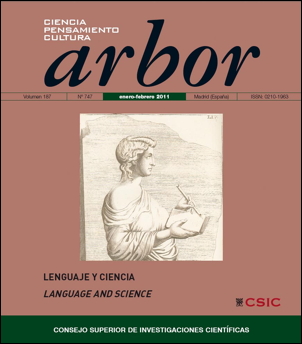Is Priscilla, the trapped positron, an individual? Quantum physics, the use of names, and individuation
DOI:
https://doi.org/10.3989/arbor.2011.747n1007Keywords:
Individuals, non-individuals, identity, quantum objects, trapped particlesAbstract
Nobel laureate Hans Dehmelt trapped a positron for three months, which was named “Priscilla”. Dehmelt said that we could not doubt the identity of Priscilla. This poses us a philosophical problem, for we have learnt from quantum physics (in most of its interpretations) that quantum objects shouldn’t have individuality. In this paper, we address on the questions of naming quanta and the issue of individuation. We conclude by saying that, although Dehmelt has named something, this something is not an individual.
Downloads
References
Dalla Chiara, Maria Luisa (1985): “Names and Descriptions in Quantum Logic”, in Mittelstaedt, Peter and E.-W. Stachow (eds.), Recent Developments in Quantum Logics, Mannheim: Bibliographisches Institut, pp. 189-202.
Dehmelt, Hans Georg (1989): Autobiography, at the Nobel Prize Organization web page.
Dehmelt, Hans Georg (1990): “Experiment on the Structure of an Individual Elementary Particle”, Science, New Series, Vol. 247, No. 4942: 539-45.
French, Steven and Michael Redhead (1988): “Quantum Physics and the Identity of Indiscernibles”, British Journal for the Philosophy of Science, 39: 233-246. doi:10.1093/bjps/39.2.233
French, Steven and Décio Krause (2006): Identity in Physics: A Historical, Philosophical, and Formal Analysis, Oxford: Oxford University Press.
Goldstein, Sheldon (2006): “Bohmian Mechanics”, The Stanford Encyclopedia of Philosophy (Summer 2006 Edition).
Heisenberg, Werner (1949): The Physical Principles of Quantum Theory, New York: Dover.
Heppenheimer, Thomas A. (1994): “A Positron Named Priscilla: Trapping and Manipulating Atoms”, in Bartusiak, Marcia et al. (eds.), A Positron Named Priscilla: Trapping and Manipulating Atoms, Washington, D.C.: National Academy Press, pp. 34-59.
Mendelson, Elliot (1987): Introduction to Mathematical Logic, London: Chapman & Hall, 4th. ed.
Quinton, Anthony (1973), The Nature of Things, London: Routledge & Kegan Paul.
Schrödinger, Erwin (1953): “What is matter?”, Scientific American, Sept.: 52-57.
Schrödinger, Erwin (1957): “What is an Elementary Particle?”, in Schrödinger, Erwin, Science, Theory, and Man, London: Allen & Unwin, pp. 193-223.
Toraldo di Francia, Giuliano (1981): The Investigation of the Physical World, Cambridge: Cambridge University Press.
Downloads
Published
How to Cite
Issue
Section
License
Copyright (c) 2011 Consejo Superior de Investigaciones Científicas (CSIC)

This work is licensed under a Creative Commons Attribution 4.0 International License.
© CSIC. Manuscripts published in both the printed and online versions of this Journal are the property of Consejo Superior de Investigaciones Científicas, and quoting this source is a requirement for any partial or full reproduction.
All contents of this electronic edition, except where otherwise noted, are distributed under a “Creative Commons Attribution 4.0 International” (CC BY 4.0) License. You may read the basic information and the legal text of the license. The indication of the CC BY 4.0 License must be expressly stated in this way when necessary.
Self-archiving in repositories, personal webpages or similar, of any version other than the published by the Editor, is not allowed.














